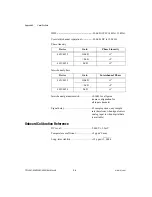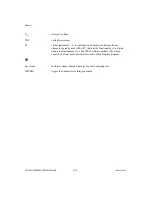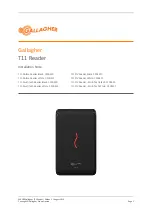
Glossary
©
National Instruments Corporation
G-3
PCI-4451/4452/4453/4454 User Manual
bus
the group of conductors that interconnect individual circuitry in a computer.
Typically, a bus is the expansion vehicle to which I/O or other devices are
connected. Examples of PC buses are the ISA and PCI bus.
C
C
Celsius
CalDAC
calibration DAC
CCIF
See IMD.
channel
pin or wire lead to which you apply or from which you read the analog or
digital signal. Analog signals can be single-ended or differential. For digital
signals, you group channels to form ports. Ports usually consist of either
four or eight digital channels.
circuit trigger
a condition for starting or stopping clocks
clip
clipping occurs when an input signal exceeds the input range of the
amplifier
clock
hardware component that controls timing for reading from or writing to
groups
CMOS
complementary metal-oxide semiconductor
CMRR
common-mode rejection ratio—a measure of an instrument’s ability to
reject interference from a common-mode signal, usually expressed in
decibels (dB)
code width
the smallest detectable change in an input voltage of a DAQ device
common-mode range
the input range over which a circuit can handle a common-mode signal
common-mode signal
the mathematical average voltage, relative to the computer’s ground, of the
signals from a differential input
common-mode voltage
any voltage present at both instrumentation amplifier inputs with respect to
amplifier ground
conditional retrieval
a method of triggering in which you simulate an analog trigger using
software. Also called software triggering.
















































